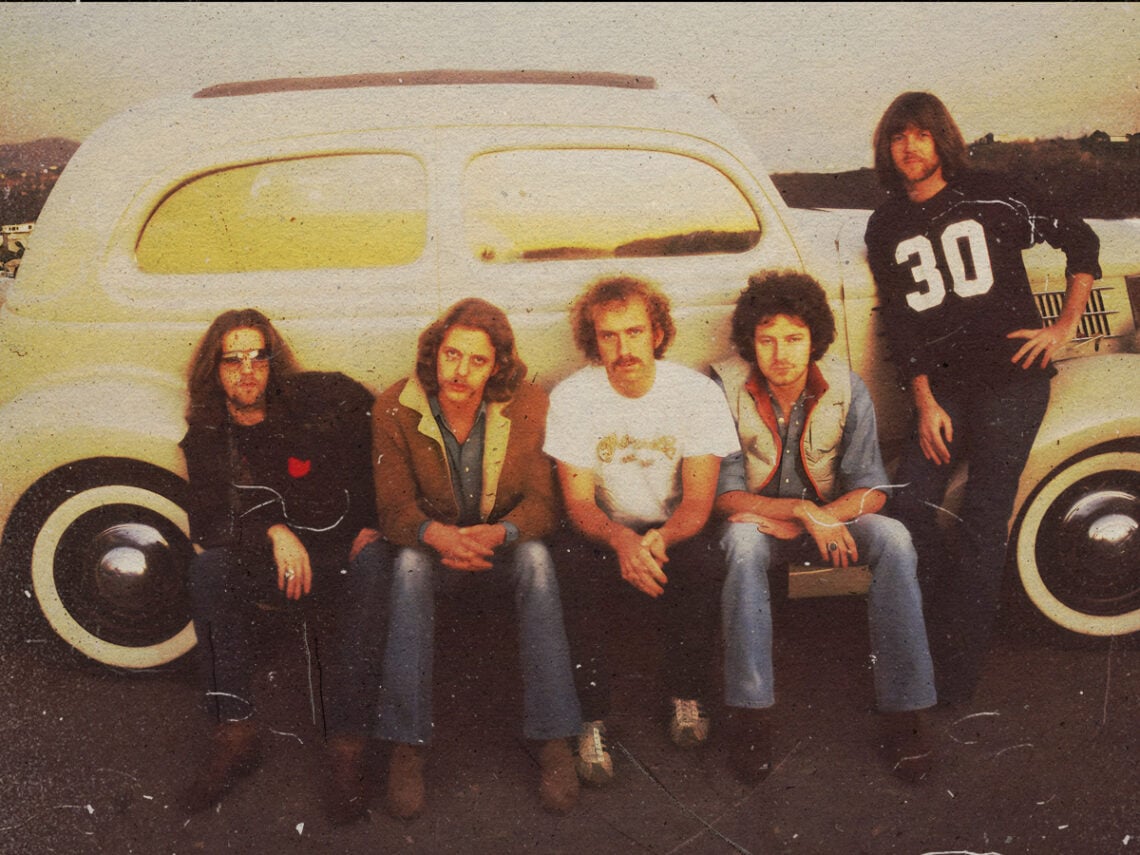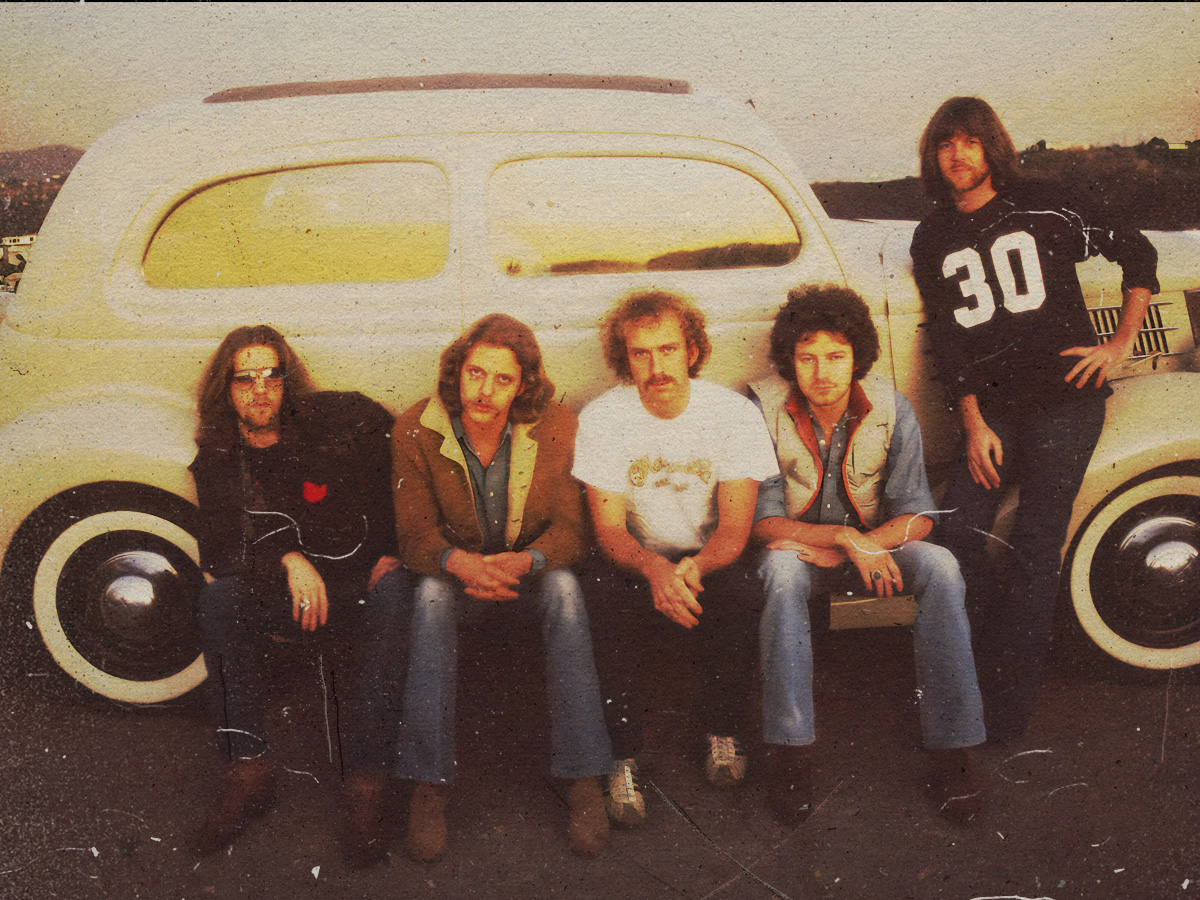
(Credits: Far Out / Showtime / The Eagles)
Sun 16 November 2025 17:30, UK
The very reason three-part harmonies are so compelling to listen to is because of how hard they are to do. It takes a sort of musical alchemy to combine three separate voices of different timbres and make them merge as seamlessly as the Eagles did in the 1970s.
The band pushed past the regular backstage drama that would follow them around to step on stage and deliver vocals that were akin to the Californian breeze from which they came. Taking hints from The Beatles, The Beach Boys and Crosby, Stills and Nash, who all came before them, the West Coast rockers made a point of building their songs on a bedrock of collective voices.
Crucial to the success of that was their melody writing, which facilitated all of the strengths of each member. When the surrounding voices would drop off in the verses, allowing one vocalist, either Don Henley, Glenn Frey, Don Felder or Randy Meisner to take centre stage, they would be sure to follow it up with a chorus line that welcomes the harmonies back into the fold. On songs done well, it was a truly captivating sonic signature that the band had mastered.
Despite what you may think about the Eagles, there is a surrender to one’s ego that must take place before perfecting this. The quality of the vocals were only as good as the collective within them, and so that meant no overzealous solos à la Celine Dion. All members had to serve the song equally, and to their credit, they did that.
Consequently, it made for a discography that is extremely hard to cover. When solo artists take on one of the Eagles’ songs themselves, it ultimately ends up in a lost bid to cover all vocal bases, which none of their songs were designed for. Many have tried, but many have failed, and as the heartless journalist I am, I am going to highlight all of those in the latter.
Related Topics

